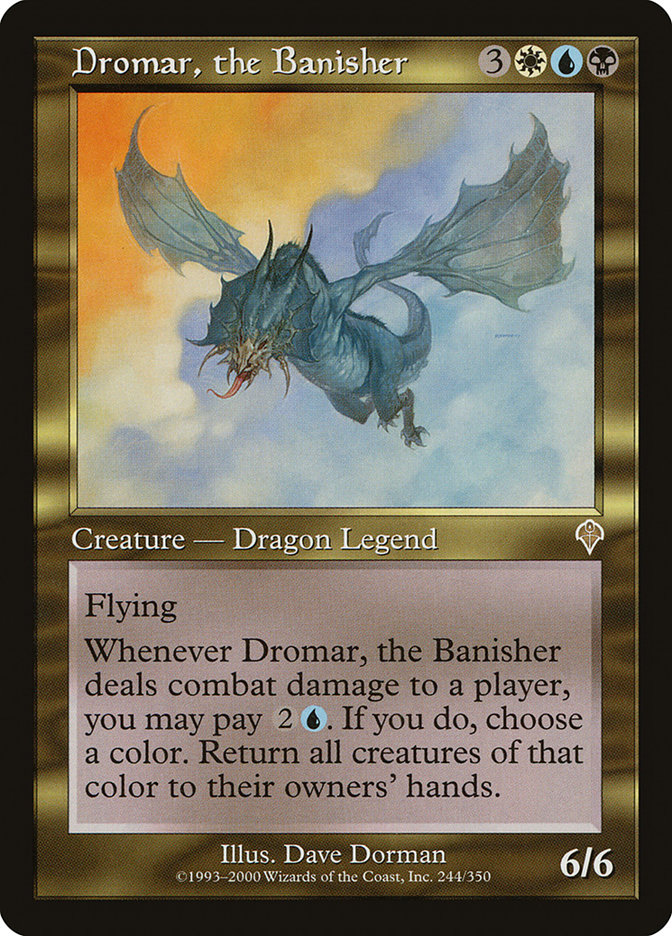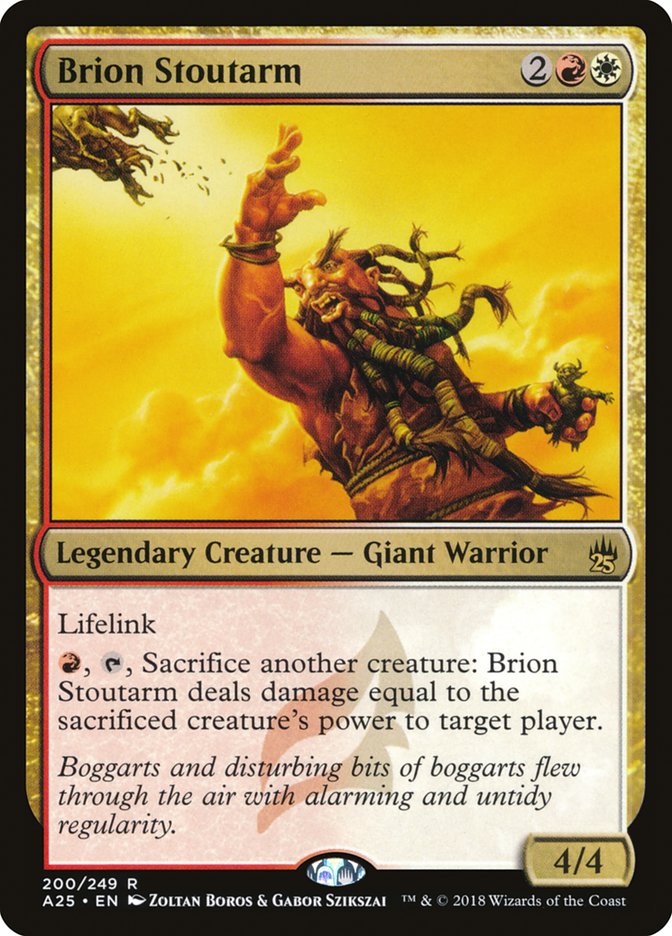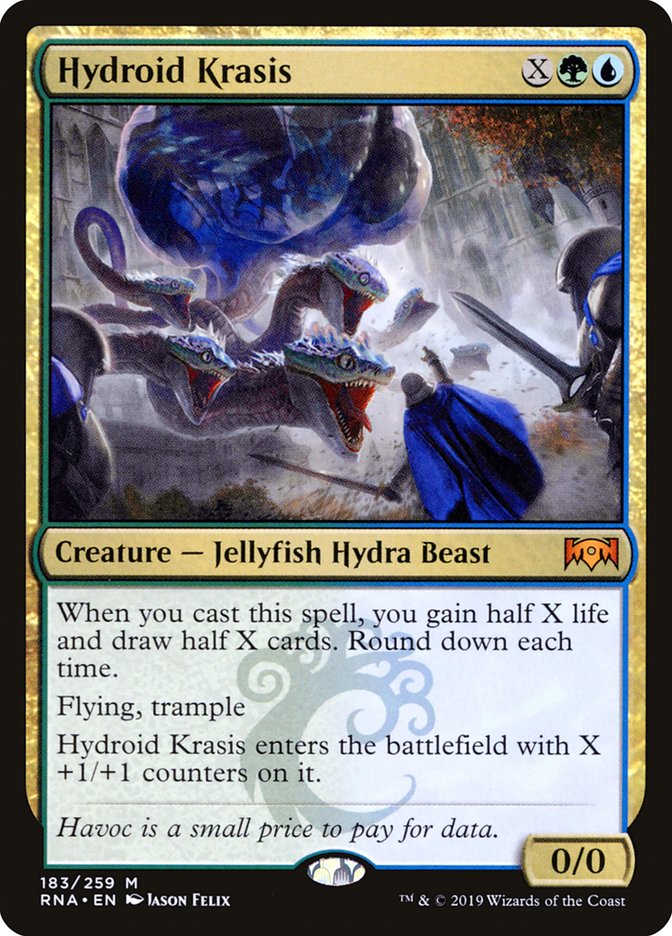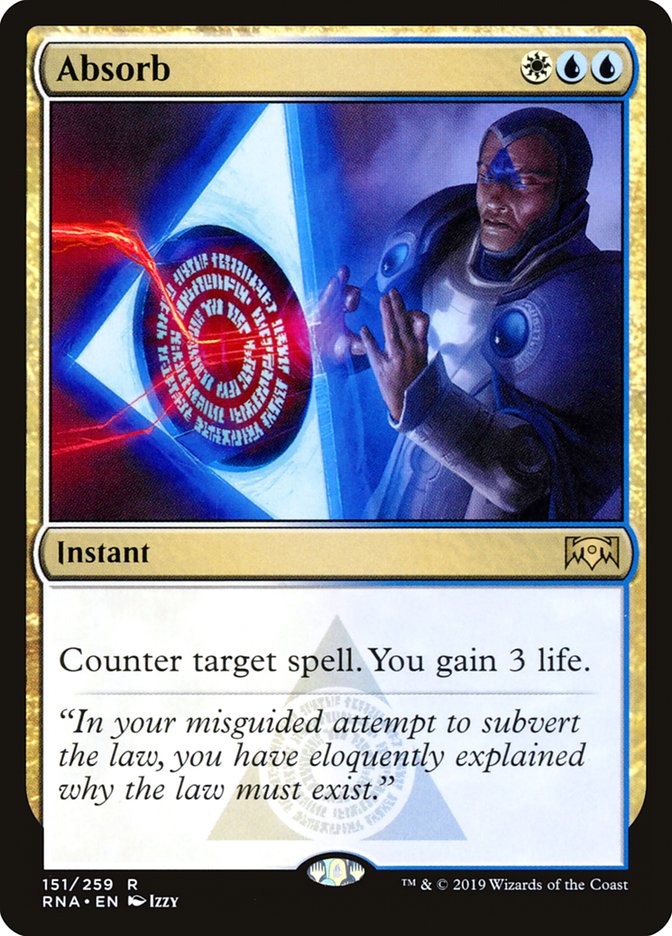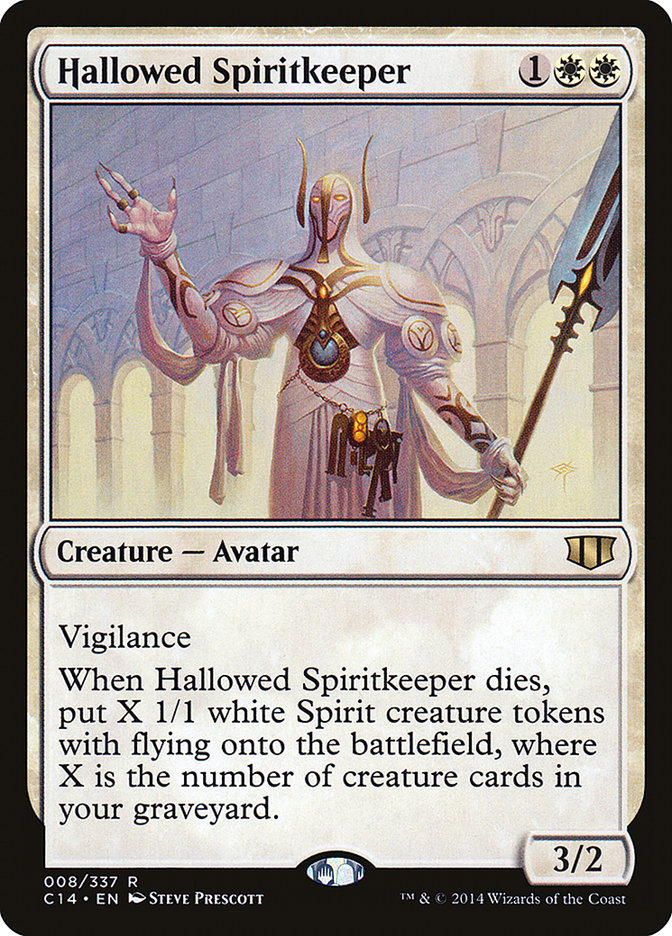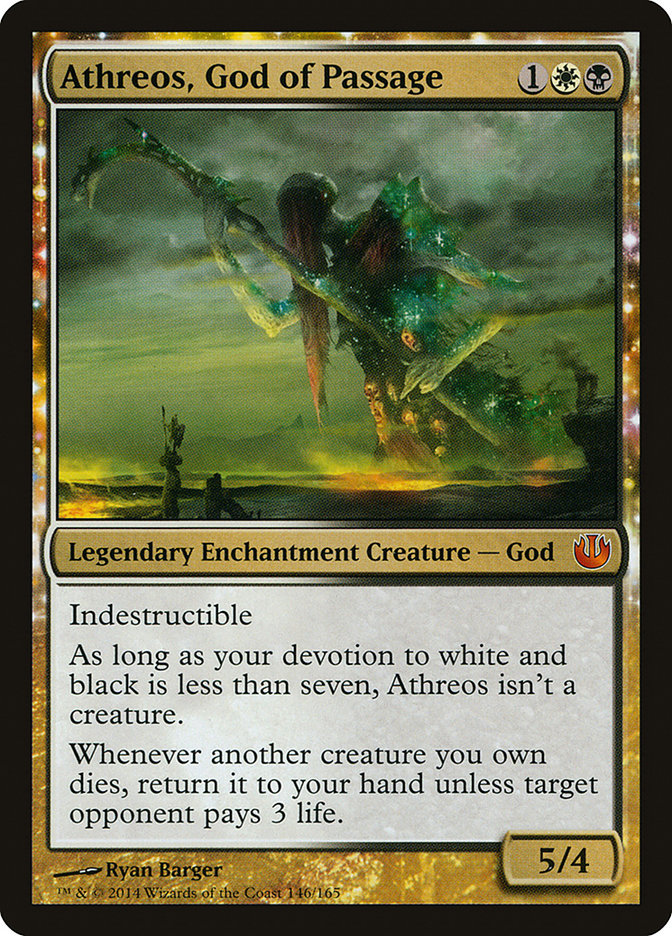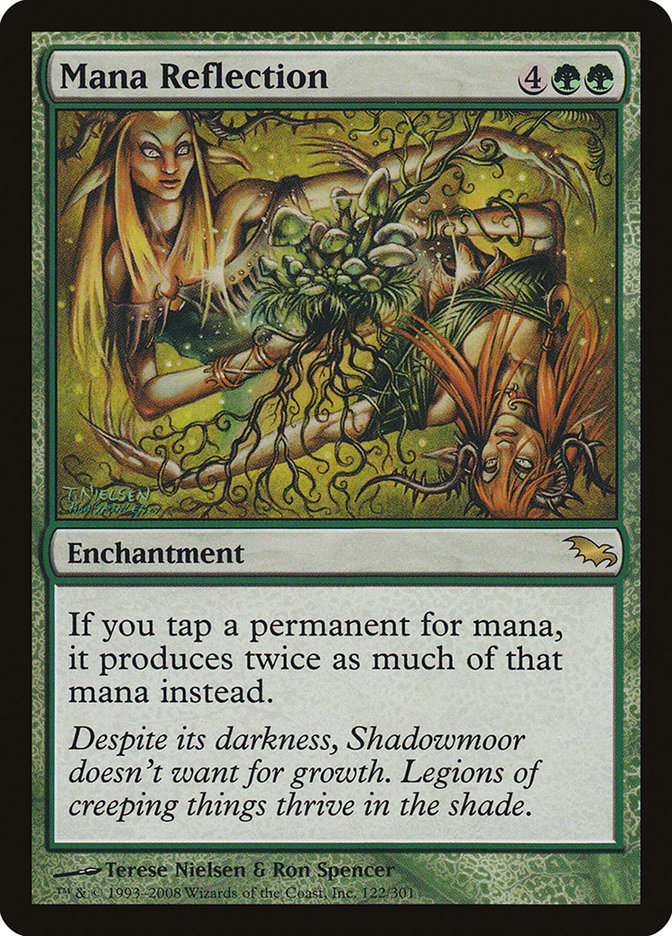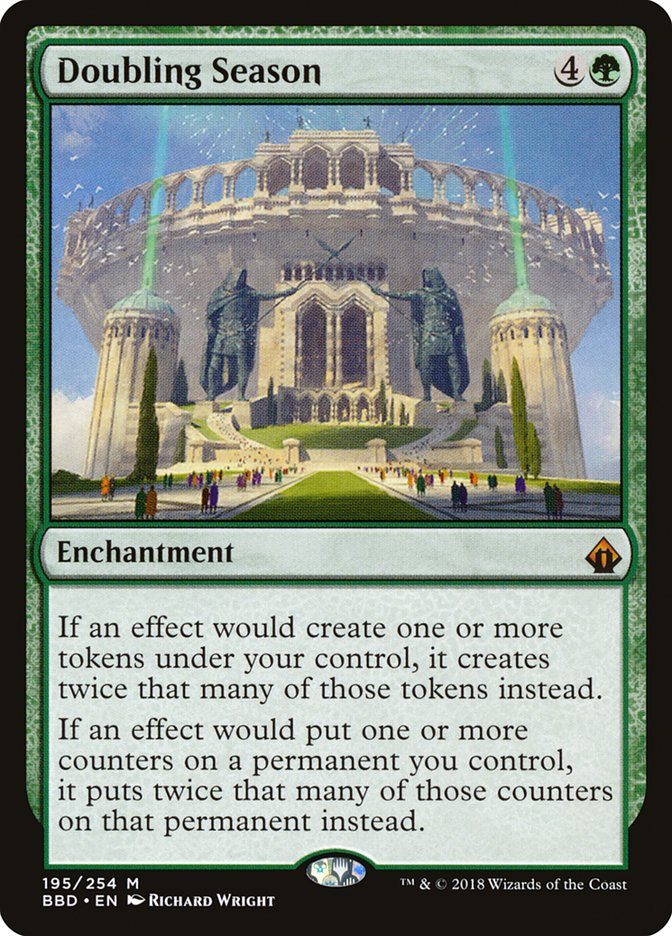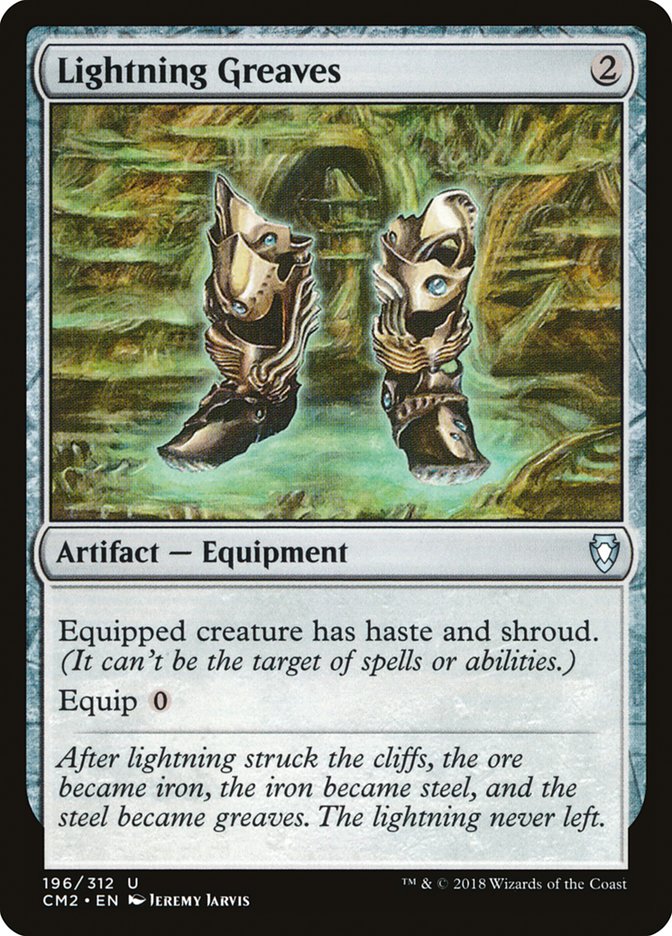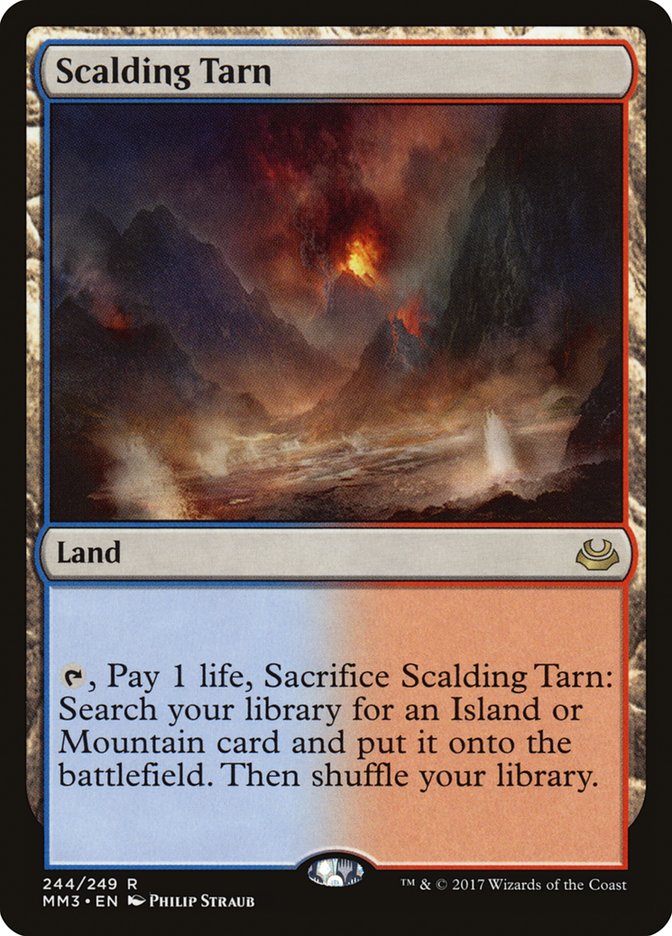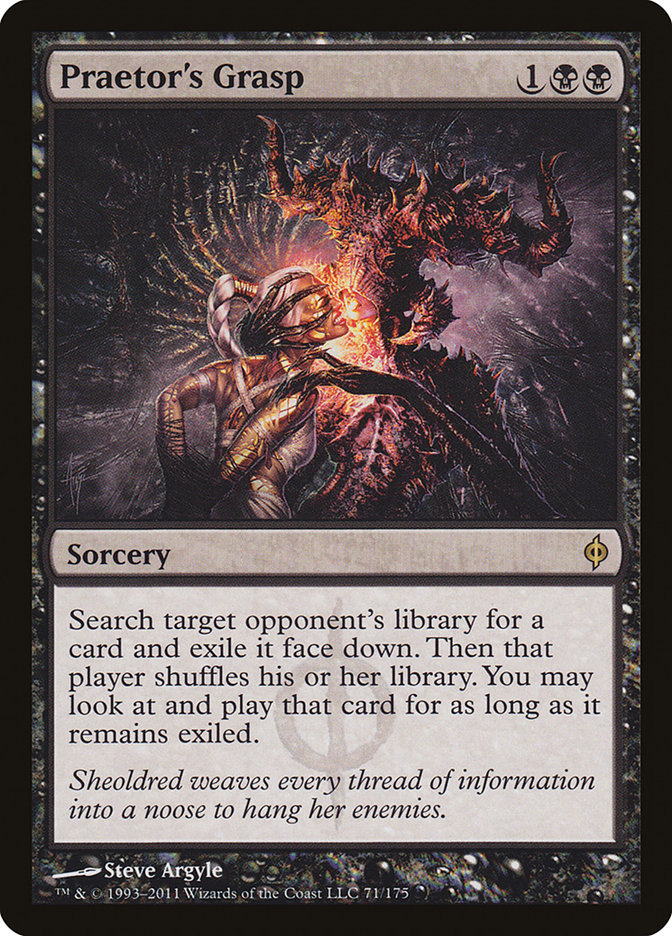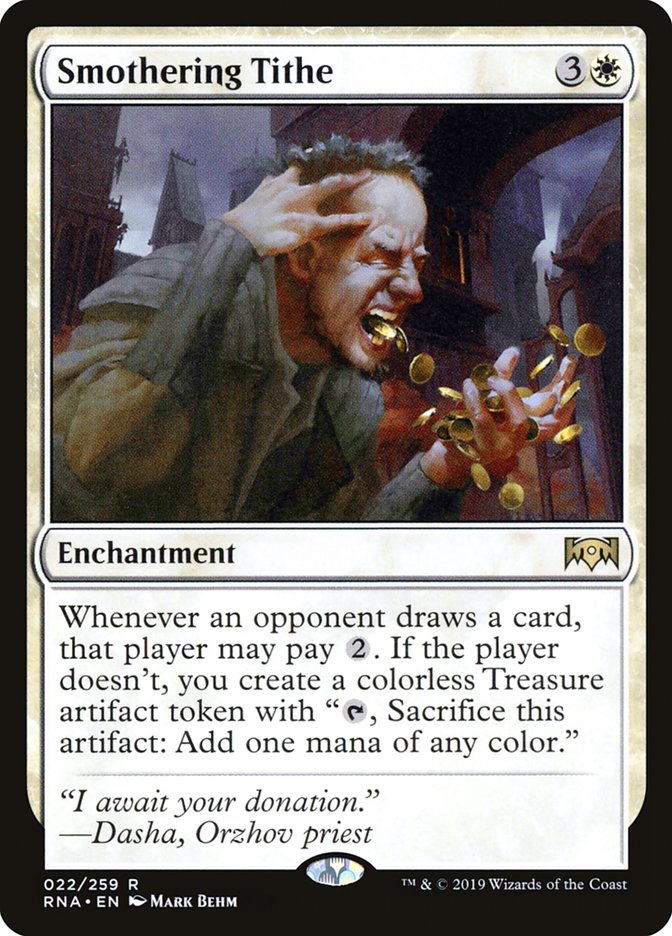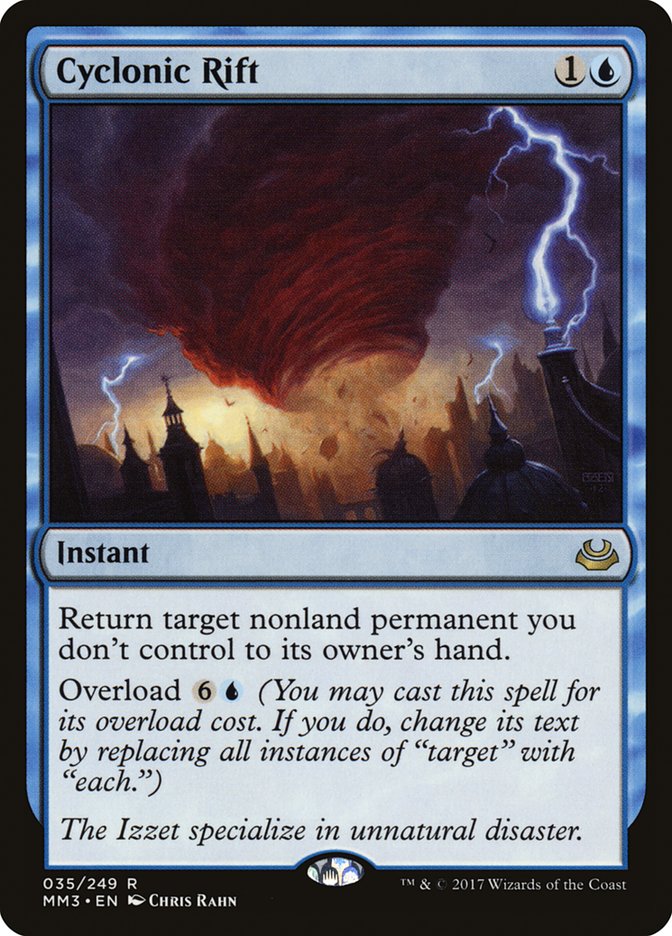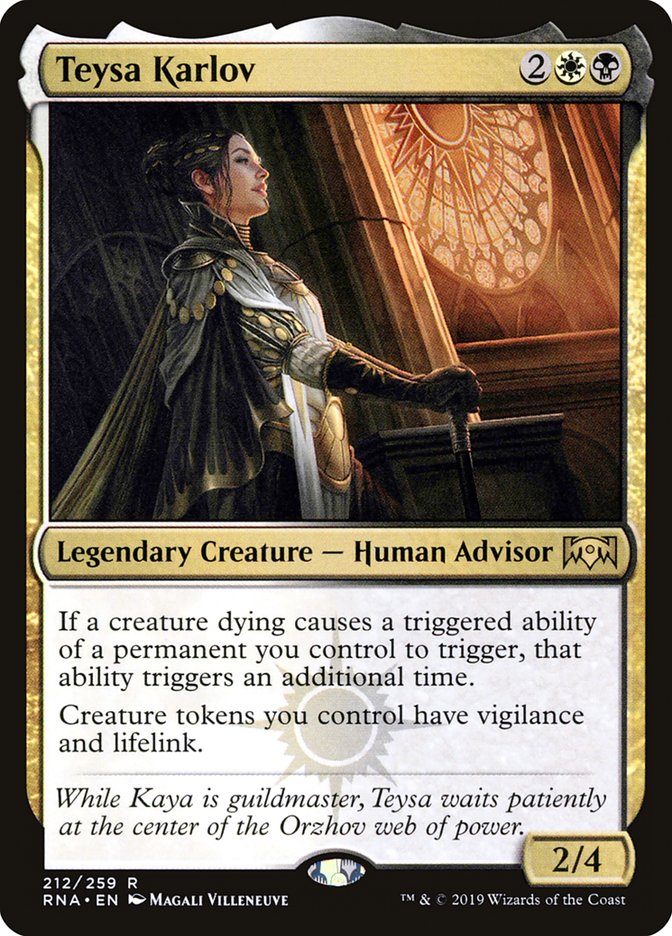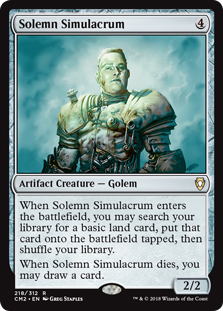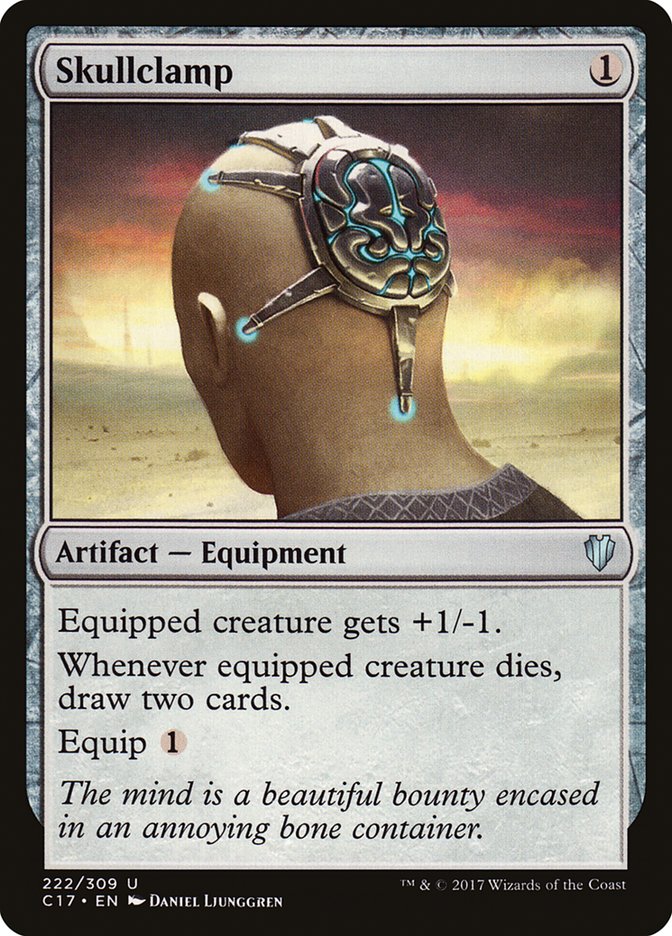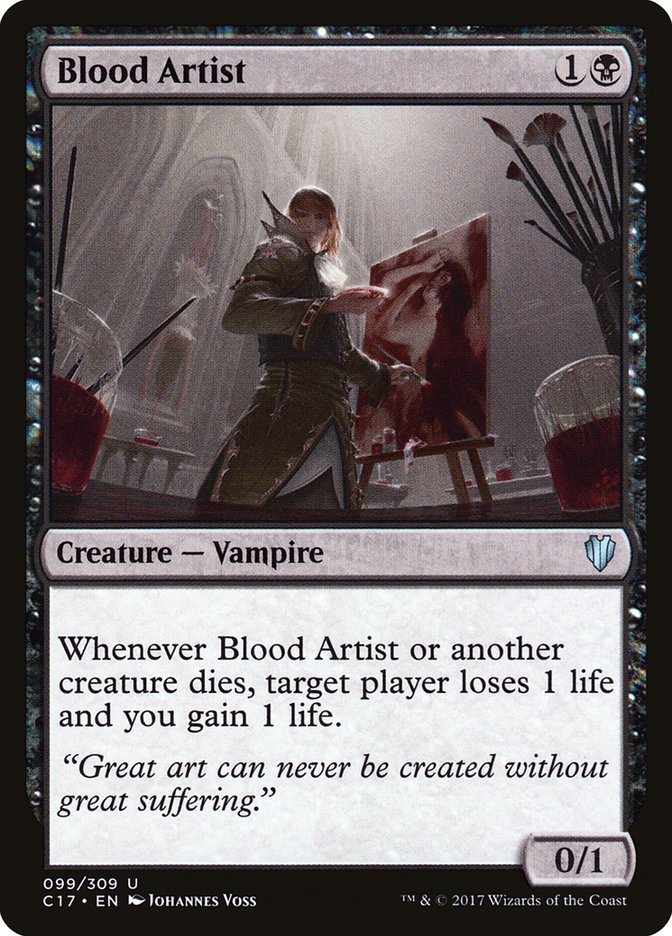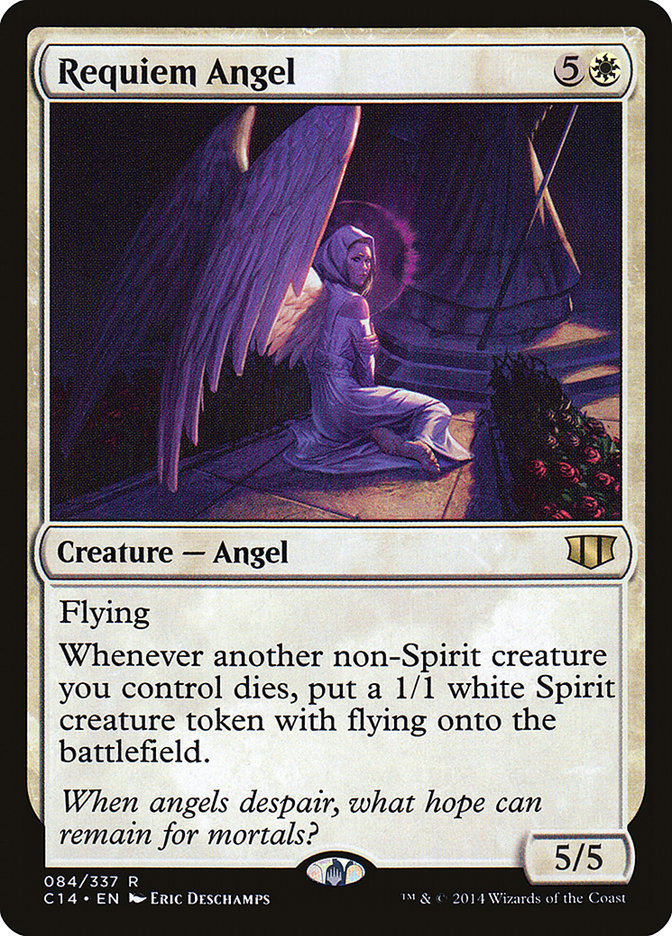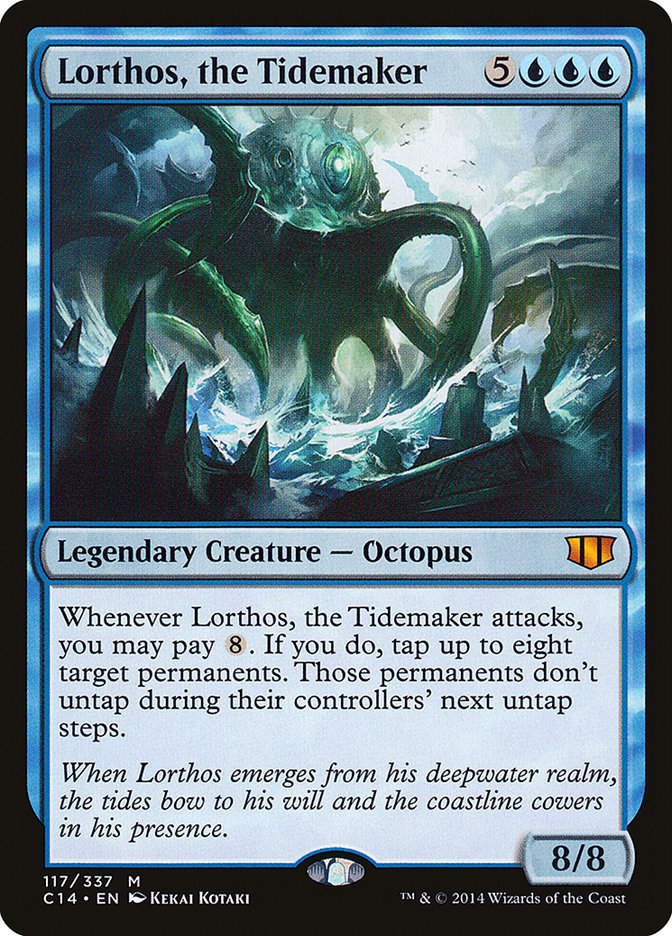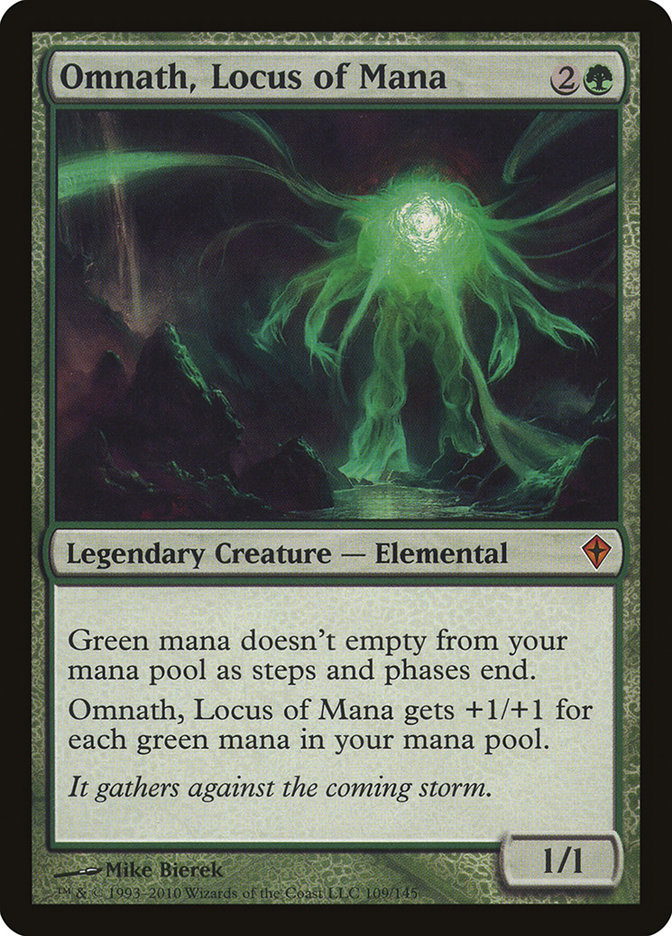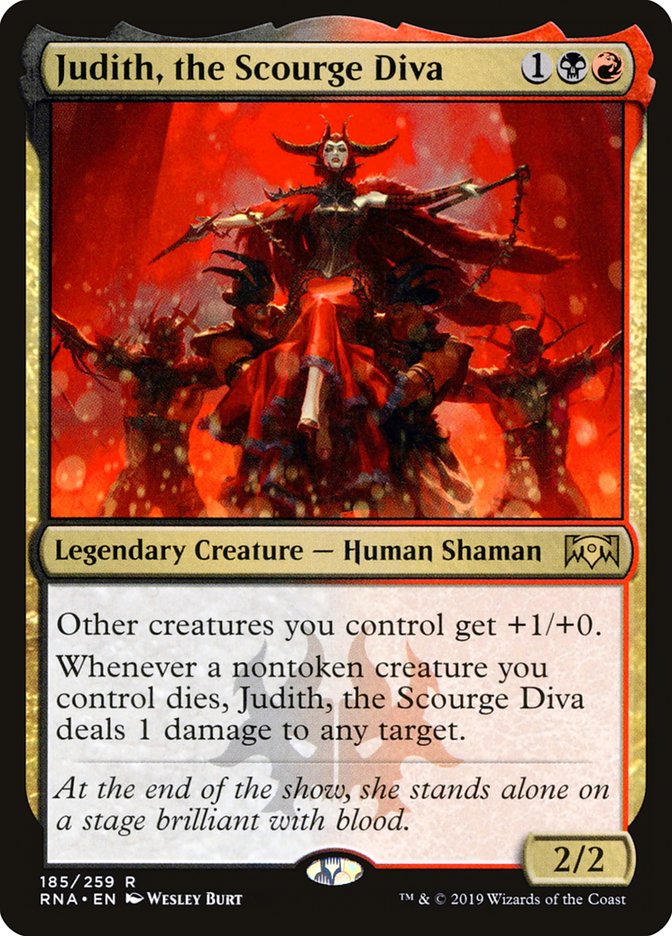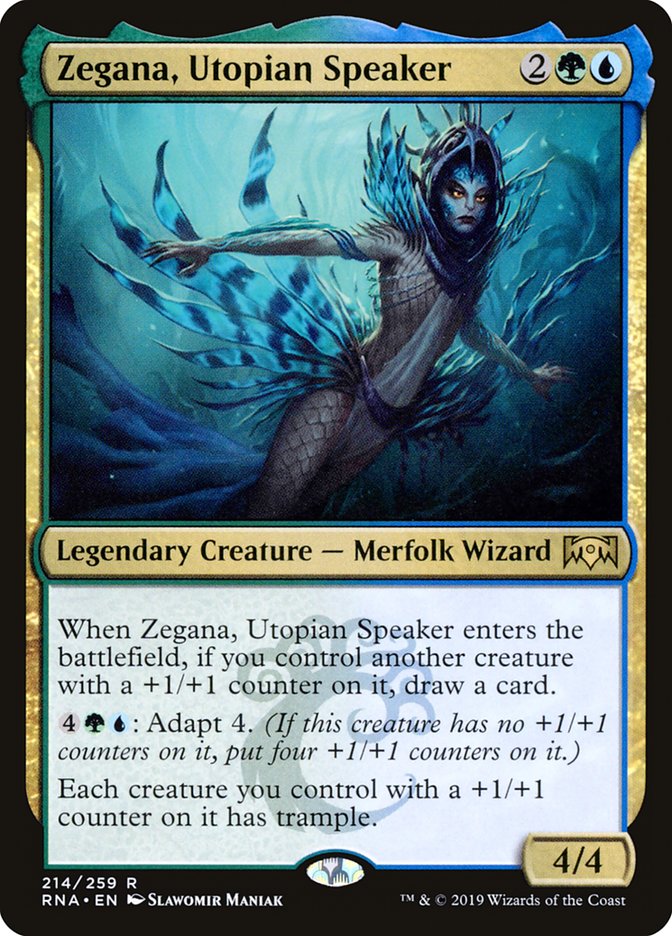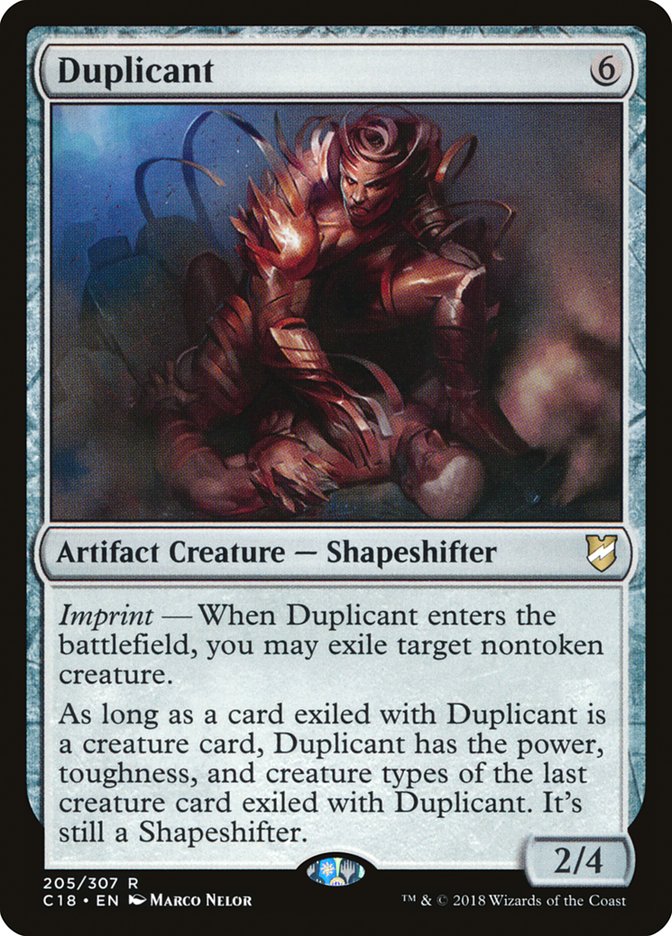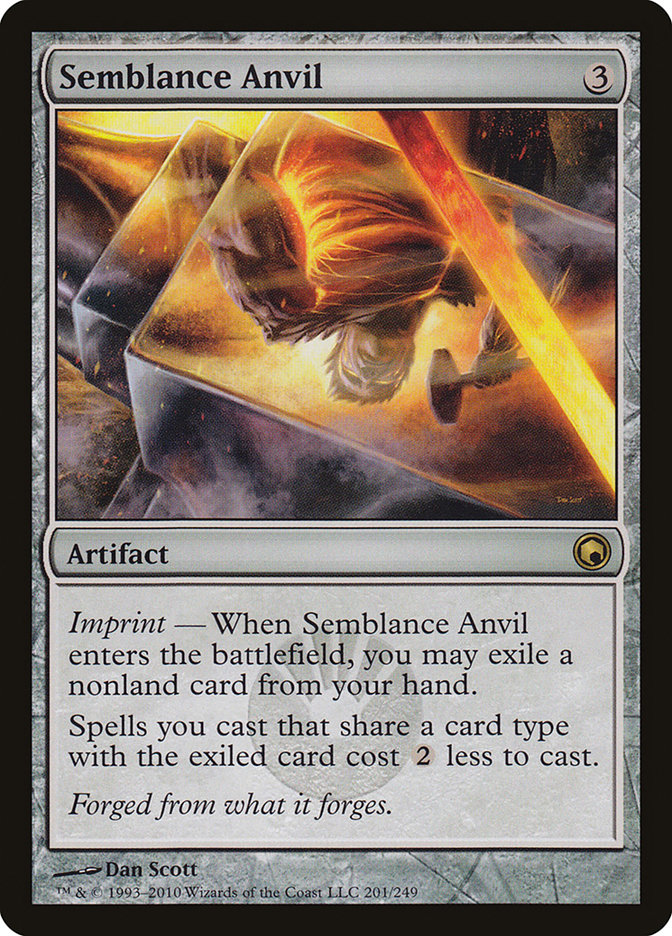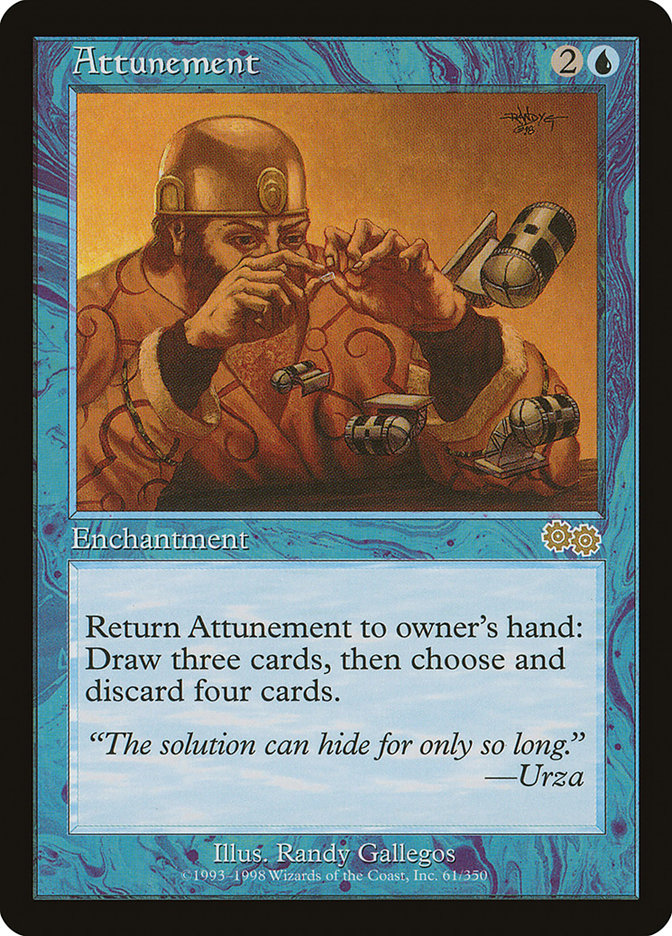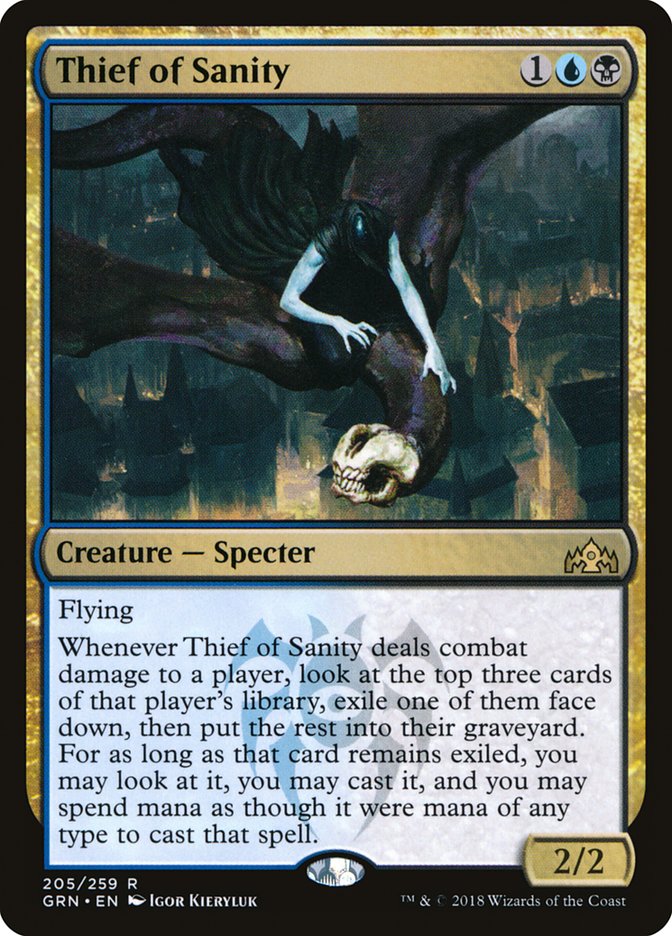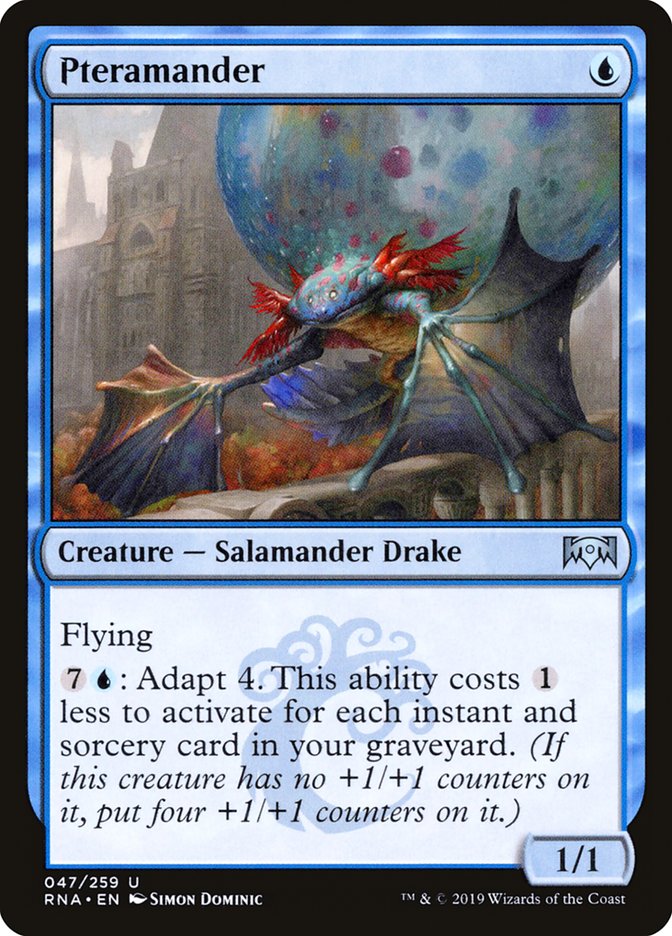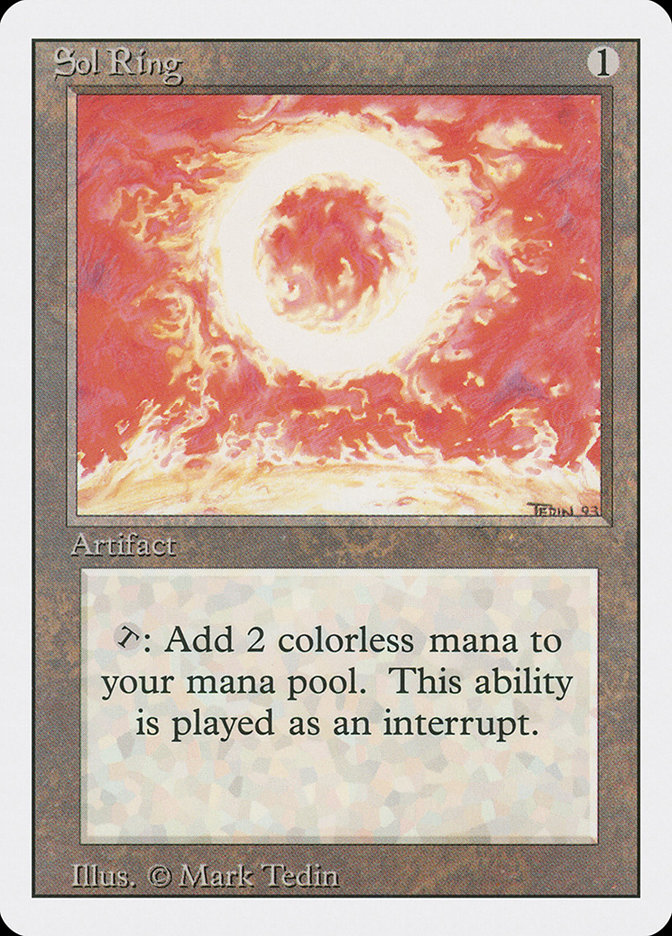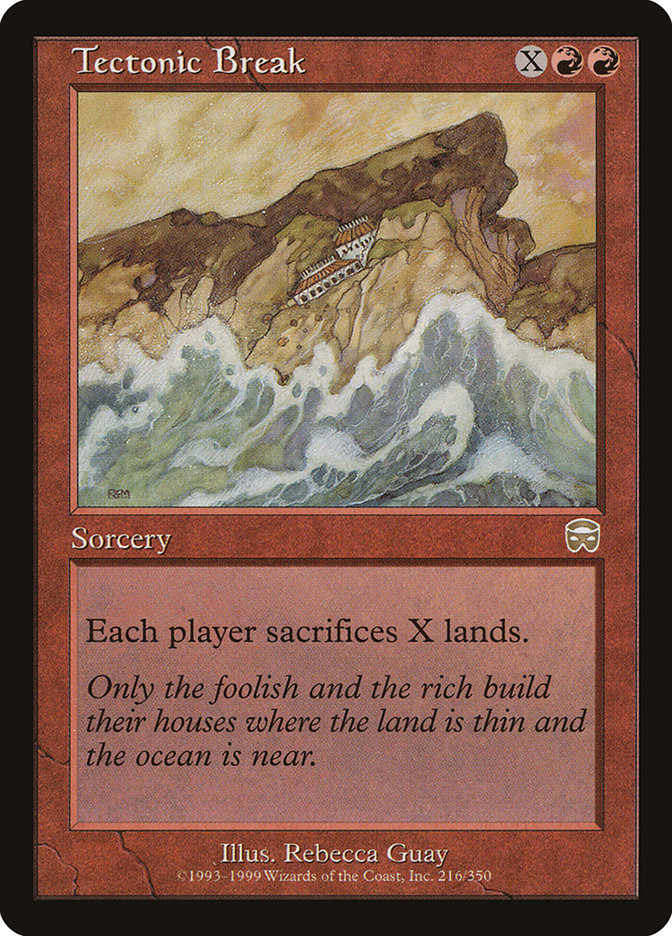The first game of Commander that I ever played was between my Dromar, the Banisher deck and my opponent’s Brion Stoutarm deck. My deck’s theme could roughly be described as “the good Esper-colored cards from my trade binder.” His deck’s theme was “lots of power for very little mana cost and maybe some other stuff?”
That proved to be a more cohesive theme than mine, and Brion prevailed. I immediately went home and built four other Commander decks.
I don’t write about Commander speculation nearly as much as I write about Standard and Modern for one simple reason: most of my readers (hey, that’s you!) play a lot more Standard and Modern. The sorts of people who devour strategy articles on websites like this one tend to be a fairly competitive breed, and Commander isn’t a very popular competitive format. In fact, I can pretty well state that there’s a direct negative correlation between the competitiveness of a given Commander game and how much fun I end up having.
From a Magic finance perspective, however, Commander is one of the most important and lucrative niches to master. Sure, it’s amazing when you hit on that one underrated Standard mythic that jumps from $5 to $30 every few months, but most Standard speculation involves hitting on a card that spikes from $3 to $10 over and over again, in high enough volume for it to matter. You can make bank with Modern, but generally only if you’re a few steps ahead of the rest of the world on a sweet new piece of tech. Otherwise, Modern speculation involves a lot of “Buy this card for $8, wait a year, sell it for $25.”
But Commander speculation, if done well, can be both less risky and more lucrative than either Standard or Modern speculation.
This isn’t a problem if you hit on a card like Hydroid Krasis early on, but it’s frustrating when you’re trying to speculate on a lower-ceiling card like Absorb, which dropped from $3 down to $2.50 this week even though it’s a four-of in the format’s best control deck. Even though early Absorb buyers were correct in guessing that it would soon become the counterspell of choice in Esper Control, they still lost money because the available supply continues to outpace demand.
Commander speculation can also come with some pretty ludicrous margins. For example, Hallowed Spiritkeeper jumped from $0.50 to $7 a couple of weeks ago. Even higher-end Commander spikes, like Athreos, God of Passage, spiked from $15 all the way up to $35. When you’re dealing with older cards like these, the market can dry up fast and the price tag can really climb as the dealers scramble to fulfill their pending orders. Again, this is more of a rarity in Standard, and it really only happens in special cases like Arclight Phoenix or Hydroid Krasis.
The Commander market also moves slightly slower than either Standard or Modern, which means that you can actually use data to back up your specs instead of having to rely on predictions. I’ll get more into the nitty-gritty of this a bit later in this piece, but resources like EDHREC make Commander speculation fundamentally less risky than most competitive buys. Instead of relying on, say, a random 5-0 list that may or may not actually be good, you’re banking on crowd-sourced data regarding the popularity of a given card. And with Commander, popularity is all that matters. A card being “good” or not is irrelevant.
So now that you know why it’s worth thinking about Commander speculation, let’s talk about the best practices for finding cards to buy.
“Good in Commander” Doesn’t Always Mean Good in Commander
Back when the format was called Elder Dragon Highlander, Commander speculation was an entirely different animal. The most in-demand cards where those that were generically good in all sorts of decks, like Mana Reflection, Doubling Season, Lightning Greaves, Sol Ring, Eternal Witness, etc.
These cards are still in high demand, of course – Mana Reflection is $35, Doubling Season is $38, and even Lightning Greaves is $8 despite a seemingly endless number of reprints. If you think you can spot the next Sol Ring in Ravnica Allegiance, go nuts. Unequivocal format staples like Chromatic Lantern and Cyclonic Rift do come around from time to time, after all, and Smothering Tithe may actually be on their level.
The problem is, unequivocal format staples are incredibly rare in Commander. Other than lands and a handful of cheap and well-established utility cards, every Commander deck is wildly different. If you go searching for the next Sol Ring, you’re probably going to end up empty-handed. The real money is in finding the next Athreos.
Unfortunately, most of the speculators who don’t play a lot of Commander miss this point. They approach the format as if it were Standard, where the real money actually is in finding the good utility staples that can fit in multiple top decks. This leads to a lot of hype for generically good six or seven-mana spells that have some sort of game breaking effect. I have no doubt that resolving an Emergency Powers or a Ravager Wurm in Commander would be incredibly sweet, but cards like almost never see enough play to end up being good specs.
The reason for this is that Commander players approach their deckbuilding decisions (and their card-buying decisions) very differently from most competitive Constructed players.
When I’m building a competitive deck, I need to have the best 75 cards for my particular strategy. Period. End of story. If four of those cards are prohibitively expensive – Teferi, say, or Scalding Tarn – well, then I’m just going to have to buy them or trade for them. Showing up at a tournament with a deck that I know is sub-optimal feels bad, and I’m always going to do whatever I can to improve my edge by even a tiny margin.
In Commander, I’m far more willing to be flexible with my utility slots. There are dozens of format-legal Wraths, hundreds of spot removal spells, recursion spells, mana rocks, large creatures, etc. If something is too cost prohibitive, there are almost always ten other halfway-decent alternatives that I can consider.
This becomes even less of a problem once I start putting together my 100-card list and realizing just how little room I have for cards that don’t fit my current theme. Once I factor in the lands, mandatory utility spells, and all the on-theme stuff that was the reason for building the deck in the first place, I’m usually left staring at another twenty or 30 cards for maybe five spots. I’ve got a foil copy of Praetor’s Grasp that I keep trying to find a deck for, but it ends up getting cut every single time. The card should be great in Commander – and it is – but what am I cutting for it?
But this doesn’t mean that Commander players won’t shell out for cards that they need – far from it. If a card is a necessary part of whatever theme I’m trying to run with, I’ll pay whatever I need to in order to get it. To use another example that I’ve already touched on in this article, look at the amazing interaction between Teysa Karlov (the most popular Commander in the game right now) and Hallowed Spiritkeeper. It’s like they were made for each other! If I’m building a Teysa deck, Hallowed Spiritkeeper is a must-play. And so the price goes up.
This is the main thing to keep in mind when speculating on Commander cards. If a card is on-theme with the hottest new Commander, it’s going to rise in price – fast.
Using EDHREC for Profit and More Profit
There’s no better resource anywhere online for Commander speculation than EDHREC. It’s the best way to feel the pulse of the actual Commander community, beyond all the bluster and speculation. Which cards in Ravnica Allegiance do Commander players want the most? Just navigate over to the Ravnica Allegiance page and find out.
EDHREC is most useful during the end of preview season and the start of a set’s release period. You know, the same time everybody (including myself) is focused on Standard. This is when the Commander player base is trying out new strategies and figuring out what’s fun to play. You don’t have to do any of the work yourself. You don’t even have to read any articles about it. You just have to navigate over to the EDHREC page for the latest set and take a look at which cards are popular.
Like I said earlier, I rarely speculate on the new cards themselves. Smothering Tithe is the rare exception to this rule, where the card is so popular in Commander that it steadfastly refuses to drop in price. Personally, I’m still waiting for a window where this $5 card ends up at $2-$3 for a couple of weeks, but I recognize that this abundance of caution might cause me to miss out on Smothering Tithe altogether. This card is going to break $10 at some point due to Commander demand alone. Did you know that Cyclonic Rift is sold out at $25 right now? Smothering Tithe might not be quite on that level, but it’s close.
In general, the best thing to do is to click on the most popular commander in a new set and take a look at its Top Cards and Signature Cards according to EDHREC’s algorithm. This is where the real money is.
EDHREC considers a deck’s Top Cards to be the format staples that show up in the highest percentage of user-submitted decks for a given Commander. I’m not certain what the cutoff is for a card to be considered enough of a staple to show up as a Top Card, but these are cards that see at least a moderate amount of play elsewhere. For example, Teysa’s #1 Top Card right now is Solemn Simulacrum, which shows up in 71% of all submitted Teysa decks. This makes sense: Solemn Simulacrum is a generically good card that also plays well with Teysa’s death trigger ability. It’s a win/win.
On the other hand, EDHREC considers a deck’s Signature Cards to be the cards that have the highest level of synergy with a given commander. Again, I don’t know exactly how this algorithm works, but it does a pretty good job of highlighting the cards that show up a lot in all the user submitted decks for a given Commander and not so much elsewhere. For example, Grim Haruspex is one of Teysa’s Signature Cards, even though it’s not really a Commander format staple.
Which cards spike the most when a commander becomes super-popular? Let’s take a deeper dive into Teysa and see what the numbers tell us.
Here are Teysa’s fourteen Top Cards, in order, from most expensive to least. I’ve also included a rough calculation of their recent gains in an attempt to track their price movement through all the recent Teysa spikes. This is harder than it looks, especially for cards like Midnight Reaper, whose gains are mostly due to its rising popularity in Standard, but it’s still very useful data for our purposes.
Anyway, here they are:
- Elenda, the Dusk Rose – $18 ($2 gain)
- Anointed Procession – $14 ($3 gain)
- Dictate of Erebos – $14 ($2 gain)
- Divine Visitation – $10 (stable)
- Black Market – $10 ($5 gain)
- Kokusho, the Evening Star – $6 ($1 gain)
- Midnight Reaper – $5 ($2 gain)
- Anguished Unmaking – $5 ($0.50 gain)
- Solemn Simulacrum – $5 ($0.50 gain)
- Swords to Plowshares – $1.50 (stable)
- Utter End – $1 (stable)
- Dark Prophecy – $1 ($0.50 gain and rising)
- Butcher of Malakir – $0.50 (stable)
- Falkenrath Noble – $0.25 (stable)
Very few of these cards would have been super-lucrative specs, unfortunately. Black Market doubled in price, and Dark Prophecy is in the middle of a Teysa-related spike right now (one that I never would have noticed if I hadn’t been writing this article), but the needle didn’t really move for stalwarts like Solemn Simulacrum or Swords to Plowshares. Hot cards like Dictate of Erebos and Anointed Procession continued to tick up in price, but they were already pretty expensive due to their overall rising popularity in the format. And Teysa didn’t really move the needle on low-value/high-supply cards like Utter End and Butcher of Malakir.
That said, there’s nothing wrong with using a list like this as a way of looking for solid trade targets. None of these cards went down in price, and most of them gained at least 10-20% of value over the past couple of weeks. And considering the overall state of the Magic market recently, that’s not too shabby.
But what of Teysa’s Signature Cards? Let’s take a look at those:
- Teysa, Orzhov Scion – $12 (Estimate – Out of Stock at $9 on SCG) ($7 gain)
- Hallowed Spiritkeeper – $7 (Estimate – Out of Stock at $4 on SCG) ($6 gain)
- Skullclamp – $6 (Out of Stock) ($3 gain)
- Blood Artist – $5 (Out of Stock) ($2 gain)
- Ashnod’s Altar – $5 ($1 gain)
- Viscera Seer – $2.50 (stable)
- Revel in Riches – $1.25 ($0.75 gain)
- Yahenni, Undying Partisan – $1.25 ($0.25 gain)
- Grim Haruspex – $1 ($0.25 gain)
- Requiem Angel – $0.50 (stable)
- Pawn of Ulamog – $0.50 ($0.25 gain)
- Zulaport Cutthroat – $0.50 (stable)
- Sifter of Skulls – $0.50 (stable)
- Pitiless Plunderer – $0.25 (stable)
This list is a little bit spicier.
First up, we’ve got Teysa, Orzhov Scion and Hallowed Spiritkeeper. Both of these cards saw major price spikes and would have made for excellent spec targets. Even though we’re evaluating this list in hindsight, it’s pretty easy to see why these two cards saw the biggest jumps in price. Teysa, Orzhov Scion was only printed once, all the way back in Guildpact, and Hallowed Spiritkeeper was only printed in Commander 2014. Low-supply rares are always the best Commander spec targets and these two were no exception to that rule.
After that, we’ve got cards like Skullclamp and Blood Artist, which don’t see quite enough overall play to make the Top Cards list but which are still well-known for their power level. These two didn’t spike quite as much, but they did see financially significant gains.
Last, there’s an entire pile of commons, uncommons, and recently printed rares. Even though Grim Haruspex and Requiem Angel are as important to the Teysa decks as Teysa, Orzhov Scion and Hallowed Spiritkeeper, there are just way more copies of these two cards out there. Grim Haruspex was in Khans of Tarkir and Requiem Angel was in both Commander 2014 and Dark Ascension. I’m actually a little surprised that Requiem Angel hasn’t seen much movement yet – a spike to $2-$3 might be incoming – but most of the rest of these cards are from sets like Oath of the Gatewatch and Kaladesh. Popularity in a single Commander deck might move the needle on mythic rares from these recent sets, but it’s probably not going to be enough for previously bulk rares or uncommons.
If you look back through the last several dozen buzz-worthy commanders, from Arcades, the Strategist through Atraxa, Praetors’ Voice and beyond, you’ll find that this same pattern repeats itself over and over again. Low-supply cards from the Signature Cards list are always among the most lucrative buys of the year. They’re low-risk, high-reward specs that don’t even require much knowledge of the Commander format. All you must do is read the list and buy in at the right time.
Finding the Next Teysa
Using EDHREC (or simply listening to your local Commander players) is probably the safest way to get ahead of these specs – and since the Commander market moves slow enough, there’s no real rush – but if you want to get way ahead of the curve, it’s not terribly hard to peg the next hot Commander staple.
First, you want to look for a new multicolored legendary creature. Monocolored commanders are a thing – Lorthos, the Tidemaker and Omnath, Locus of Mana are two of my favorite decks – but a quick look at this list of top commanders says it all: no monocolored creatures anywhere.
After that, you can generally discount most of the creatures that encourage hyper-aggressive play. Commander is still generally a multiplayer format and playing aggressive decks that run out of gas early isn’t much fun in most multiplayer environments. In general, you want to look for legendary creatures that encourage control or combo play.
Last, you want to look for some sort of theme or build-around mechanic that hasn’t been done before. Teysa Karlov is the perfect example of this, because Magic is full of death triggers and there hasn’t been a way to build around them before. Creature tokens are also super-popular among the Commander crowd.
Contrast this with Judith, the Scourge Diva (too aggressive) or Zegana, Utopian Speaker (there are already several extant commanders that play into a similar “+1/+1 counters matter” theme.) Lavinia, Azorius Renegade isn’t really a card you can build around, since her abilities are all about punishing your opponent instead of enabling your other cards. Nikya of the Old Ways is pretty promising, though, and lo and behold, she’s the second-most-popular commander in Ravnica Allegiance.
In other words, you’re looking for a commander that’ll lead to other cards spiking simply because there’s a bunch of new demand for cards that were previously underutilized. Zegana, Utopian Speaker hasn’t caused many price spikes in part because all the cards that play well with her are already in demand due to several other existing decks. That wasn’t true for several of the best cards in Teysa’s decks, which is why Hallowed Spiritkeeper and Skullclamp saw such a significant boost in value.
Dealing with Reprints
Last, I want to touch on one of the biggest perils in Commander speculation: reprints. Unlike with Modern, where cards can rebound pretty fast after a Masters set reprint, many Commander cards drop fast and stay low for a while.
This obviously isn’t true for the elite staples, like Cyclonic Rift, which is far higher now than it ever was before its Modern Masters 2017 reprint. But even just generically good Commander cards like Duplicant can suffer pretty hard at the hands of a reprint. Duplicant was as high as $10 before its reprint in Eternal Masters. You can pick these up for just $2 now.
And more Commander reprints are coming. Gavin Verhey promised as much in his State of Product Design article a few weeks back. Commander reprints are easier to fit into sets than Modern reprints since their power level is usually lower, and a lot of these cards are only expensive because they had exactly one printing and it was a decade or so ago. When these cards show up again, they’re going to tank and tank hard. Most of them won’t recover, at least not for years and years.
My point here isn’t to discourage you from investing in Commander, but to remind you that it’s just as important to be nimble with Commander as it is to be nimble with Standard or Modern. More so, perhaps. Off-the-radar cards that spike due to a new Commander are safer, but it’s only a matter of time before the Anointed Processions and Grave Pacts of the world show up again. If you decide to speculate in this direction, it’s worth at least taking a look at how many times a given card has been printed and low long ago that printing was. The fewer printings a card has, and the longer it’s been since its last printing, the greater the risk of being blown out by a reprint.
This Week’s Trends
The biggest spike of the weekend – or at least of last Friday – was Semblance Anvil. The card has always been somewhat underrated for casual play, but the real jump in demand came when Piotr Gtogowski posted this Ironworks-esque list that he took to a 5-0 finish on Magic Online.
We just 5-0'd with this on my stream, should have banned Mox Opal and Stirrings dear wotc pic.twitter.com/bY2Zxpl60K
— Piotr Głogowski (@kanister_mtg) February 15, 2019
Is this new Krark-Clan Ironworks-free deck any good? I couldn’t tell you. Ironworks was such a difficult deck to play that we didn’t even really know how good it was for months after its debut. Point is, Semblance Anvil was bought out immediately by Modern players and speculators alike. The card was $2-$3 on Thursday night, and it was a solid $15 by mid-day Friday.
Semblance Anvil is almost certainly going to peak and drop in price over the next couple of days, even if the deck ends up being good, simply because it’ll take everyone quite a while to figure out just how real the deck actually is. In the meantime, speculators are going to dump their copies onto the marketplace. Feel free to sell into the hype if you can, but don’t worry too much if the price starts to slip back down toward $5-$6. There’s still a shot that Semblance Anvil is the real deal, and if not, then a whole bunch of new casual players will learn about the card for the first time. That demand, by itself, should be enough to prevent it from dropping back down to $2-$3.
Speaking of massive spikes, Urza’s Saga rare Attunement shot up from bulk to almost $15 this week thanks to a new Legacy Replenish deck that Caleb Durward showed off this week on his Twitch stream. If you want to watch the deck in action, here is the VOD. While Legacy doesn’t really create too many spikes these days, an older card showing up out of nowhere will often lead to spikes like this. More people playing it would likely lead to secondary spikes for Replenish, Intuition, and foil copies of Sandwurm Convergence.
Over in Standard, it was the first truly slow week in ages. Thief of Sanity and Pteramander were up about a buck each, but overall the market has been pretty flat and the metagame pretty clearly established. I suspect that the upcoming Mythic Championship will change that, however, and we’ll get into the nitty-gritty of that in next week’s column.
There was more movement in Modern, where the index has really started to perk up in recent days. Jace, the Mind Sculptor has really started to see a surge in demand, and its price tag has followed. With no real likelihood of a Jace reprint on the horizon, it’s starting to look like $150 isn’t out of the question for the powerful blue planeswalker.
Speaking of reprints, Aaron Forsythe used a Valentine’s Day poem to throw cold water on the idea that Nexus of Fate might be reprinted in one of the upcoming Standard Challenger Decks. And even though the card was essentially emergency banned in Arena best-of-one this week, I don’t expect demand for paper copies to fall off any time soon. It is worth remembering that these Challenger Decks are on the way, though, and there’s a real chance that they’ll contain at least one copy of Teferi, Hero of Dominaria. I still think that demand for Teferi is strong enough to remain high through a Challenger Deck reprint, but it would likely end up in the $30 range instead of the $60 that it’s at right now.
Last, there were a couple of artificial price spikes this week, as people bought out Revised copies of Sol Ring and Mercadian Masques rare Tectonic Break. Both spikes have already started to settle down, and I don’t expect them to maintain their 500% gains or whatever. Feel free to sell into the hype.


